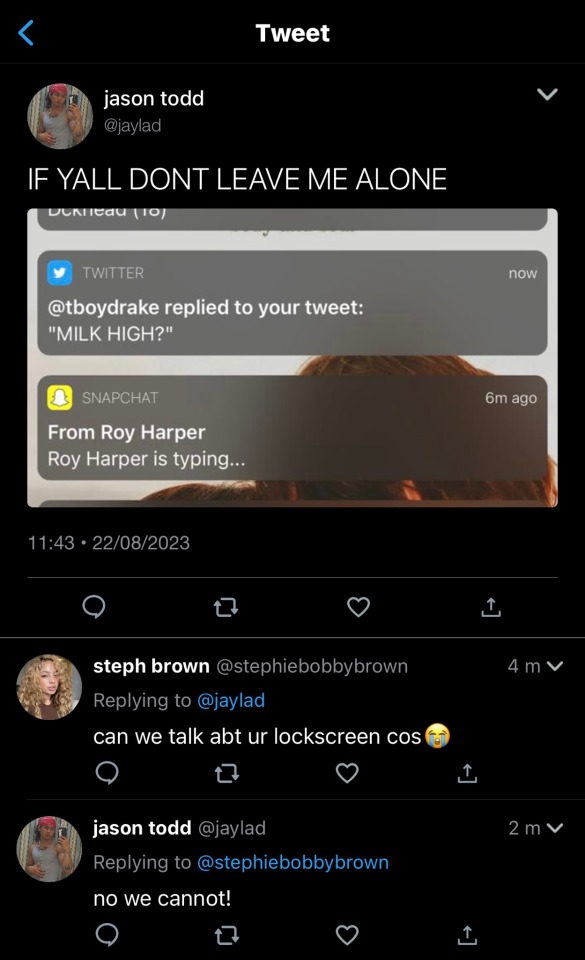#price signals
Text
Insurance companies are making climate risk worse

Tomorrow (November 29), I'm at NYC's Strand Books with my novel The Lost Cause, a solarpunk tale of hope and danger that Rebecca Solnit called "completely delightful."

Conservatives may deride the "reality-based community" as a drag on progress and commercial expansion, but even the most noxious pump-and-dump capitalism is supposed to remain tethered to reality by two unbreakable fetters: auditing and insurance:
https://en.wikipedia.org/wiki/Reality-based_community
No matter how much you value profit over ethics or human thriving, you still need honest books – even if you never show those books to the taxman or the marks. Even an outright scammer needs to know what's coming in and what's going out so they don't get caught in a liquidity trap (that is, "broke"), or overleveraged ("broke," again) exposed to market changes (you guessed it: "broke").
Unfortunately for capitalism, auditing is on its deathbed. The market is sewn up by the wildly corrupt and conflicted Big Four accounting firms that are the very definition of too big to fail/too big to jail. They keep cooking books on behalf of management to the detriment of investors. These double-entry fabrications conceal rot in giant, structurally important firms until they implode spectacularly and suddenly, leaving workers, suppliers, customers and investors in a state of utter higgeldy-piggeldy:
https://pluralistic.net/2022/11/29/great-andersens-ghost/#mene-mene-bezzle
In helping corporations defraud institutional investors, auditors are facilitating mass scale millionaire-on-billionaire violence, and while that may seem like the kind of fight where you're happy to see either party lose, there are inevitably a lot of noncombatants in the blast radius. Since the Enron collapse, the entire accounting sector has turned to quicksand, which is a big deal, given that it's what industrial capitalism's foundations are anchored to. There's a reason my last novel was a thriller about forensic accounting and Big Tech:
https://us.macmillan.com/books/9781250865847/red-team-blues
But accounting isn't the only bedrock that's been reduced to slurry here in capitalism's end-times. The insurance sector is meant to be an unshakably rational enterprise, imposing discipline on the rest of the economy. Sure, your company can do something stupid and reckless, but the insurance bill will be stonking, sufficient to consume the expected additional profits.
But the crash of 2008 made it clear that the largest insurance companies in the world were capable of the same wishful thinking, motivated reasoning, and short-termism that they were supposed to prevent in every other business. Without AIG – one of the largest insurers in the world – there would have been no Great Financial Crisis. The company knowingly underwrote hundreds of billions of dollars in junk bonds dressed up as AAA debt, and required a $180b bailout.
Still, many of us have nursed an ember of hope that the insurance sector would spur Big Finance and its pocket governments into taking the climate emergency seriously. When rising seas and wildfires and zoonotic plagues and famines and rolling refugee crises make cities, businesses, and homes uninsurable risks, then insurers will stop writing policies and the doom will become undeniable. Money talks, bullshit walks.
But while insurers have begun to withdraw from the most climate-endangered places (or crank up premiums), the net effect is to decrease climate resilience and increase risk, creating a "climate risk doom loop" that Advait Arun lays out brilliantly for Phenomenal World:
https://www.phenomenalworld.org/analysis/the-doom-loop/
Part of the problem is political: as people move into high-risk areas (flood-prone coastal cities, fire-threatened urban-wildlife interfaces), politicians are pulling out all the stops to keep insurers from disinvesting in these high-risk zones. They're loosening insurance regs, subsidizing policies, and imposing "disaster risk fees" on everyone in the region.
But the insurance companies themselves are simply not responding aggressively enough to the rising risk. Climate risk is correlated, after all: when everyone in a region is at flood risk, then everyone will be making a claim on the insurance company when the waters come. The insurance trick of spreading risk only works if the risks to everyone in that spread aren't correlated.
Perversely, insurance companies are heavily invested in fossil fuel companies, these being reliable money-spinners where an insurer can park and grow your premiums, on the assumption that most of the people in the risk pool won't file claims at the same time. But those same fossil-fuel assets produce the very correlated risk that could bring down the whole system.
The system is in trouble. US claims from "natural disasters" are topping $100b/year – up from $4.6b in 2000. Home insurance premiums are up (21%!), but it's not enough, especially in drowning Florida and Texas (which is also both roasting and freezing):
https://grist.org/economics/as-climate-risks-mount-the-insurance-safety-net-is-collapsing/
Insurers who put premiums up to cover this new risk run into a paradox: the higher premiums get, the more risk-tolerant customers get. When flood insurance is cheap, lots of homeowners will stump up for it and create a big, uncorrelated risk-pool. When premiums skyrocket, the only people who buy flood policies are homeowners who are dead certain their house is gonna get flooded out and soon. Now you have a risk pool consisting solely of highly correlated, high risk homes. The technical term for this in the insurance trade is: "bad."
But it gets worse: people who decide not to buy policies as prices go up may be doing their own "motivated reasoning" and "mispricing their risk." That is, they may decide, "If I can't afford to move, and I can't afford to sell my house because it's in a flood-zone, and I can't afford insurance, I guess that means I'm going to live here and be uninsured and hope for the best."
This is also bad. The amount of uninsured losses from US climate disaster "dwarfs" insured losses:
https://www.reuters.com/business/environment/hurricanes-floods-bring-120-billion-insurance-losses-2022-2023-01-09/
Here's the doom-loop in a nutshell:
As carbon emissions continue to accumulate, more people are put at risk of climate disaster, while the damages from those disasters intensifies. Vulnerability will drive disinvestment, which in turn exacerbates vulnerability.
Also: the browner and poorer you are, the worse you have it: you are impacted "first and worst":
https://www.climaterealityproject.org/frontline-fenceline-communities
As Arun writes, "Tinkering with insurance markets will not solve their real issues—we must patch the gaping holes in the financial system itself." We have to end the loop that sees the poorest places least insured, and the loss of insurance leading to abandonment by people with money and agency, which zeroes out the budget for climate remediation and resiliency where it is most needed.
The insurance sector is part of the finance industry, and it is disinvesting in climate-endagered places and instead doubling down on its bets on fossil fuels. We can't rely on the insurance sector to discipline other industries by generating "price signals" about the true underlying climate risk. And insurance doesn't just invest in fossil fuels – they're also a major buyer of municipal and state bonds, which means they're part of the "bond vigilante" investors whose decisions constrain the ability of cities to raise and spend money for climate remediation.
When American cities, territories and regions can't float bonds, they historically get taken over and handed to an unelected "control board" who represents distant creditors, not citizens. This is especially true when the people who live in those places are Black or brown – think Puerto Rico or Detroit or Flint. These control board administrators make creditors whole by tearing the people apart.
This is the real doom loop: insurers pull out of poor places threatened by climate disasters. They invest in the fossil fuels that worsen those disasters. They join with bond vigilantes to force disinvestment from infrastructure maintenance and resiliency in those places. Then, the next climate disaster creates more uninsured losses. Lather, rinse, repeat.
Finance and insurance are betting heavily on climate risk modeling – not to avert this crisis, but to ensure that their finances remain intact though it. What's more, it won't work. As climate effects get bigger, they get less predictable – and harder to avoid. The point of insurance is spreading risk, not reducing it. We shouldn't and can't rely on insurance creating price-signals to reduce our climate risk.
But the climate doom-loop can be put in reverse – not by market spending, but by public spending. As Arun writes, we need to create "a global investment architecture that is safe for spending":
https://tanjasail.wordpress.com/2023/10/06/a-world-safe-for-spending/
Public investment in emissions reduction and resiliency can offset climate risk, by reducing future global warming and by making places better prepared to endure the weather and other events that are locked in by past emissions. A just transition will "loosen liquidity constraints on investment in communities made vulnerable by the financial system."
Austerity is a bad investment strategy. Failure to maintain and improve infrastructure doesn't just shift costs into the future, it increases those costs far in excess of any rational discount based on the time value of money. Public institutions should discipline markets, not the other way around. Don't give Wall Street a veto over our climate spending. A National Investment Authority could subordinate markets to human thriving:
https://democracyjournal.org/arguments/industrial-policy-requires-public-not-just-private-equity/
Insurance need not be pitted against human survival. Saving the cities and regions whose bonds are held by insurance companies is good for those companies: "Breaking the climate risk doom loop is the best disaster insurance policy money can buy."
I found Arun's work to be especially bracing because of the book I'm touring now, The Lost Cause, a solarpunk novel set in a world in which vast public investment is being made to address the climate emergency that is everywhere and all at once:
https://us.macmillan.com/books/9781250865939/the-lost-cause
There is something profoundly hopeful about the belief that we can do something about these foreseeable disasters – rather than remaining frozen in place until the disaster is upon us and it's too late. As Rebecca Solnit says, inhabiting this place in your imagination is "Completely delightful. Neither utopian nor dystopian, it portrays life in SoCal in a future woven from our successes (Green New Deal!), failures (climate chaos anyway), and unresolved conflicts (old MAGA dudes). I loved it."

If you'd like an essay-formatted version of this post to read or share, here's a link to it on pluralistic.net, my surveillance-free, ad-free, tracker-free blog:
https://pluralistic.net/2023/11/28/re-re-reinsurance/#useless-price-signals
#pluralistic#doom loop#insurance#insuretech#climate#climate risk#climate emergency#the lost cause#market forces#risk management#price signals#control boards#decarbonization#bond vigilantes#climate resilience
262 notes
·
View notes
Text







two hours of sleep and i forgot the word for dairy problems
→
#jason todd#red hood#tim drake#red robin#steph brown#steph brown spoiler#dc signal#duke thomas#bruce wayne#batman#cassandra cain#cas cain#dc orphan#dick grayson#nightwing#diana price feature#wonder woman#twitter au#social media au#the lockscreens a still from pride & prejudice btw#shaza post#shaza edit
1K notes
·
View notes
Text

Hey there, I've mentioned in the past couple commission posts that my options had expanded a bit since I created the initial price sheet, so I made a new one to better reflect that!
If you're interested in getting some art, please feel free to fill out the google form here.
As always, I'm relying on these to support myself right now, so even if you can't swing a commission at the moment, reblogs and signal boosts mean so, so much. <3
173 notes
·
View notes
Photo




The New Ink Sheets Price List is now available!
Commissions are still OPEN and these Sheets will be available for a while so I can give my hand some rest and time to recuperate from heavy rendering.
For inquiries e-mail me at >>> [email protected]
Please provide reference and a short, simple description of your character together with which type of Ink Sheet you are interested in.
If you are not interested in a commission please consider reblogging this for others to see <3
159 notes
·
View notes
Note
I just deleted mw2 because I will never get passed the mission where price is whispering in my ear hoe it's going to be a close one and slow and steady. I...no. fuck that. I am better than getting horny over a bunch of voice lines 🫠
Literally could not function with Price whispering in my hear. I don’t blame you at all
#call of duty#cod mwii#modern warfare ii#john price#daddy price#ask#thanks for the ask <3#i kind of have signal in certain places
153 notes
·
View notes
Text

COMMISSIONS OPEN!
DM me or contact me at [email protected]! Drawing art for folks on the internet is my only source of income and has been for a while, so please consider if you can!
45 notes
·
View notes
Text


heyyyyy!! ya’ll should really check out my OF if you haven’t already! You get the satisfaction of supporting a cute trans girl AND you get to see my boobs!! It’s a win/win ☺️💕
https://onlyfans.com/charlottevalis
#access to all content for one price plus package deals!#aaaaaannnnnndddddd i do custom content by request ☺️#signal boosts also appreciated 😊#it me!#transgender#trans#mtf trans#tgirlselfie#tgirleyecandy#trans femme#tgirl#tgirlsdoitbetter🌈#cute tgirl#transisbetter#transisbeautiful#this is what trans looks like#girlslikeus#transgirl#trans goddess#transgirls#trans girl#trans woman#trans girls#trans onlyfans
140 notes
·
View notes
Text
HEY PEOPLE
I might get a job in the next month but im gonna need a better phone by the 19/02
I DO COMMISSIONS, I HAVE A PATREON AND A KOFI PAGE WHERE U CAN DONATE
Please!!!! Here are my links and my commission prices are on my Pinned Post
0/480 USD
#azover speaks#argentina#argie tag#argieblr#argie tumblr#argieposting#artists on tumblr#trans#transgender#support#support artists#support trans people#support trans artists#artista argentino#commissions open#commissions#commission prices#signal boost#signal b00st#tumblr polls#polls#my polls#poll#digital artist#illustrator#support independent artists#traditional artist#time sensitive#linktree
33 notes
·
View notes
Text
OXENFREE and LOST SIGNALS SALES until 3/21/24! $2.99 and $5.99 respectively!
#digi discusses#oxenfree#oxenfree II lost signals#lost signals#oxenfree II#night school studio#small price to pay for the best duology of games ever imo
24 notes
·
View notes
Text

I'm not usually on Tumblr but I figured it would be a good idea to promote commissions n things here :) Just DM if you're interested; payment is via PayPal or cash app UwU
#my art#i need to post some art hetr as well wHOOP#commissions#commission#commission art#commission prices#signal boost#you can tell my sister wrote this for me lmfao
94 notes
·
View notes
Photo

Commissions are now open!
I’ll be accepting the requests through my ko-fi page. Pricing will be $45 per character. Any character will do as long as it’s SFW. :)
Slots will have limited availability. If interested, you can check out my commissions page which can be found here!
#gotchibam commissions#commissions#commissions info#updated the pricing for my commissions!#really need extra funds again#literally wasn't able to sleep last night bc of bleeding gums so I think I'll have to go see a dentist.....#another one to add to my list of expenses @_@#please signal boost if you can#thank you!!
573 notes
·
View notes
Text
youtube
1950s cooking and history of recipe advertisements??? And you expect me not to post it on my blog for someone who worked in advertising in the 1950s???? It helps that I love his video!
#*portfolio (musings)#*no signal (ooc)#*cathode rays and rock and roll (vincent price)#As much as I love his tiktoks#the whole longer videos are less chaotic!#Youtube
98 notes
·
View notes
Text

After some feedback, I've decided to update commission prices a bit and offer a couple of additional options! If you're interested in getting some art from me, please feel free to fill out this google form to get started.
#commission prices#commissions open#digital art#furry digital art#fat fur#furry art#signal boost appreciated
73 notes
·
View notes
Text


Ko-fi Event! Sketchy Headshots OPEN!
40€.
Limited slots.
Order and pay through Ko-fi.
Last time this year!
Please, read the instructions and terms of service carefully before placing your order.
If you can’t order, but you want to give me a hand, signal boost would be super appreciated.
#signal boost#starsandskies commissions#art commissions#ko-fi#last time of this year for sure#last time with this price too#the money I’m saving it to move to Italy as soon as I can <3
43 notes
·
View notes
Text


2024 commissions are OPEN!
request here! (google forms)
important details: payment via Kofi; refunds available only before the first sketch.
if you want something similar to an art piece i did before talk to me! it can be arranged :)
more information (TOS, what i'm not willing to draw) in my commission card!
#commissions open#commissions#signal boost#art commissions#commission sheet#commission info#commission prices#mine#citricclown
18 notes
·
View notes
Text
Venture predation

Tomorrow (May 20), I’ll be at the GAITHERSBURG Book Festival with my novel Red Team Blues; then on Monday (May 22), I’m keynoting Public Knowledge’s Emerging Tech conference in DC.
On Tuesday (May 23), I’ll be in TORONTO for a book launch that’s part of WEPFest, a benefit for the West End Phoenix, onstage with Dave Bidini (The Rheostatics), Ron Diebert (Citizen Lab) and the whistleblower Dr Nancy Olivieri.

They said it couldn’t happen. After decades of antitrust enforcement against Predatory Pricing — selling goods below cost to kill existing competitors and prevent new ones from arising — the Chicago School of neoliberal economists “proved” that predatory pricing didn’t exist and that the courts could stand down and stop busting companies for it.
Predatory pricing — the economists explained — may be illegal, but it was also imaginary. A mirage. No one would do predatory pricing, because it was “irrational.” And even if there was someone irrational enough to try it, they would fail. Stand down, judges of America — predatory pricing is solved.
Chicago School economists — whose job (to quote David Roth) is to find new ways to say “actually, your boss is right” — held enormous sway of the federal judiciary. The billionaire-backed Manne Seminars offered free “continuing education” junkets to judges — all-expense-paid luxury vacations salted with lengthy your-boss-is-right econ seminars. 40% of the US federal judiciary got their heads filled up at a Manne Seminar.
For monopolists and other predators, the Manne Seminar was an excellent return on investment. After attending a Manne Seminar, the average judge’s legal decisions tipped decidedly in favor of monopoly, operating on the Chicago bedrock assumption that monopolies are “efficient,” and, where we see them in nature, we should celebrate them as the visible manifestation of the entrepreneurial genius of some Ayn Rand hero in a corporate boardroom:
https://pluralistic.net/2021/08/13/post-bork-era/#manne-down
A little knowledge is a dangerous thing. Even as post-Chicago economists showed that predatory pricing was both possible and rampant, a “rational” and effective strategy for cornering markets, suppressing competition, crushing innovation and gouging on price, judges continued to craft tortuous, unpassable tests that any predatory pricing case would have to satisfy to proceed. Economics moved on, but predatory pricing cases continued to fail the trial-by-ordeal constructed by Chicago-pilled judges.
Which is a shame, because there are at least three ways that predatory pricing can be effective:
Cost Signaling Predation: A predator tricks competitors into thinking they’ve found a new way to cut their costs, which allows them to drop prices. Competitors, fooled by the ruse, exit the market, not realizing that the predator is merely subsidizing their products’ costs to trick them.
Financial Market Predation: A predator tricks the competitors’ creditors into thinking the predator has a new way to cut costs. The creditors refuse to loan the prey companies the money needed to survive the price war, and the prey drops out of the war.
Reputation Effect Predation: A predator subsidizes prices in one region or one line of goods in order to trick prey into thinking that they’ll do the same elsewhere: “Don’t try to compete with us in Cleveland, or we’ll drop prices like we did in Tampa.”
These models of successful predation are decades old, and have broad acceptance within economics — outside of Chicago-style ideologues — but they’ve yet to make much of a dent in minds of the judges who hear Predatory Pricing cases.
While judges continue to hit the snooze-bar on any awakening to this phenomenon, a new kind of predator has emerged, using a new kind of predation: the Venture Predator, a predatory company backed by venture capital funds, who make lots of high-risk bets they must cash out in ten years or less, ideally for a 100x+ return.
Writing in the Journal of Corporation Law Matthew Wansley and Samuel Weinstein — both of the Cardozo School of Law at Yeshiva University — lay out a theory of Venture Predation in clear, irrefutable language, using it to explain the recent bubble we sometimes call the Millennial Lifestyle Subsidy:
https://papers.ssrn.com/sol3/papers.cfm?abstract_id=4437360
What’s a Venture Predator? It’s “a startup that uses venture finance to price below its costs, chase its rivals out of the market, and grab market share.” The predator sets millions or billions of dollars on fire chasing “rapid, exponential growth” all in order to “create the impression that recoupment is possible” among future investors, such as blue-chip companies that might buy them out, or sucker retail investors who buy in at the IPO, anticipating years of monopoly pricing.
In other words, the Venture Predator constructs a pile of shit so large and impressive that investors are convinced that there must be a pony under there somewhere.
There’s another name for this kind of arrangement: a bezzle, which Galbraith described as “the magic interval when a confidence trickster knows he has the money he has appropriated but the victim does not yet understand that he has lost it.”
Millennial Lifestyle Subsidy companies are bezzles. Uber, annihilated tens of billions of dollars on its bezzle, destroying the taxi industry and laying waste to public transit investment, demolishing labor protections and convincing people that impossible self-driving robo-taxis were around the coner:
https://pluralistic.net/2021/02/16/ring-ring-lapd-calling/#uber-unter
But while Uber the company lost billions of dollars, Uber’s early investors and executives made out like bandits (or predators, I suppose). The founders were able to flog their shares on the secondary market long before the IPO. Same for the early investors, like Benchmark capital.
Since the company’s IPO, its finances have steadily worsened, and the company has resorted to increasingly sweaty balance-sheet manipulation tactics and PR offensives to make it seem like a viable business:
https://pluralistic.net/2022/08/05/a-lousy-taxi/#a-giant-asterisk
But Uber can’t ever recoup the billions it spent convincing the market that there was a pony beneath its pile of shit. The app Uber uses to connect riders with the employees it misclassifies as contractors isn’t hard to clone, and it’s not hard for drivers or riders to switch from one app to another:
https://locusmag.com/2019/01/cory-doctorow-disruption-for-thee-but-not-for-me/
Nor can Uber prevent its rivals from taking advantage of the hundreds of millions of dollars it spent on “regulatory entrepreneurship” — changing the laws to make it easier to misclassify workers and operate unlicensed taxi services.
It’s not clear whether Uber ever believed in robo-taxis, or whether they were just part of the bezzle. In any event, Uber’s no longer in the robotaxi races: after blowing $2.5B on self-driving cars, Uber produced a vehicle whose mean-distance-between-fatal-crashes was 0.5 miles. Uber had to pay another company $400M to take its self-driving unit off its hands:
https://pluralistic.net/2022/10/09/herbies-revenge/#100-billion-here-100-billion-there-pretty-soon-youre-talking-real-money
Uber’s prices rose 92% between 2018–21, while its driver compensation has plunged. The company is finding it increasingly difficult to passengers into cars, and drivers onto the road. They have invented algorithmic wage disrimination, an exciting new field of labor-law violations, in order to trick drivers into thinking there’s a pony under all that shit:
https://pluralistic.net/2023/04/12/algorithmic-wage-discrimination/#fishers-of-men
To Uber’s credit, they have been a wildly innovative company, inventing many new ways to make the pile of shit bigger and the pony more plausible. Back when Uber and Lyft were locked in head-to-head competition, Uber employees created huge pools of fake Lyft rider accounts, using them to set up and tear down rides in order to discover what Lyft was charging for rides in order to underprice them. Uber also covertly operated the microphones in its drivers’ phones to listen for the chimes the Lyft app made: drivers who had both Lyft and Uber installed on their devices were targeted for (strictly temporary) bonuses.
Uber won’t ever recoup, but that’s OK. The investors and execs made vast fortunes. Now, normally, you’d expect company founders and other managers with large piles of stocks in a VC-backed company to be committed to the business’s success, at least in the medium term, because their shares can’t be liquidated until well after the company goes public.
But the burgeoning “secondary market” for managers’ shares has turned investors and managers into co-conspirators in the Venture Predation bezzle: “half of Series A and B deals now have some secondary component for founders.” That means that founders can cash out before the bezzle ends.
The trick with any bezzle is to skip town while the mark is still energetically digging through the shit, before the pony is revealed for an illusion. That’s where crypto comes in: during the cryptocurrency bubble, VCs cashed out of their investments early through Initial Coin Offerings and other forms of securities fraud. The massive returns this generated were well worth the millions they sprinkled on Superbowl ads and bribes for Matt Damon.
But woe betide the VC who mistimes their exit. As Wework showed, it’s entirely possible for VCs to be left holding the bag if they get the timing wrong. Wework blew $12b on predatory pricing — promising tenants at rivals’ businesses moving bonuses or even a year’s free rent, all to make the pile of shit look larger and thus more apt to contain a pony. The company opened its co-working spaces as close as possible to existing shops, oversaturating hot markets and showing “growth” by poaching customers through deep subsidies, then pretending that those customers would stay when the subsidies evaporated. But Wework’s “product” was temporary hot-desks, occupied by people who could (and did) move at the drop of a hat.
To its competitors, its competitors’ creditors, and credulous investors, it appeared that Wework had developed some kind of “efficiency advantage” — a secret sauce that let it sell a product at a price that was far below its rivals’ costs. But once Wework filed for its IPO, its S-1 — the form that discloses the company’s finances — revealed the truth. Wework’s only “advantage” was the bafflegab of its cult-like leader and the torrent of cash supplied by its VCs.
Wework’s IPO was a disaster. After canceling a real IPO, the company eventually went public through a scammy SPAC, saw its shares immediately tank, and continue to fall, as its balance-sheet is still blood-red with losses.
Another Venture Predator is Bird, the company that flooded American cities with cheap, flimsy Chinese scooters, choking curbs and sidewalks. 25% of the gross revenues from each scooter ride had to be written off as depreciation on the scooter. As a Bird spokesperson told the LA Times: “There are very few unique companies for which you can build global scale really quickly and build a dominant market position before other people do, and for those rarefied companies scaling quickly matters more than short-term profits.”
Bird was another company that could never recoup, whose executives and investors could only cash out if they could maintain the faint hope of the pony underneath its pile of shitty scooters. It drove the company to some genuinely surreal lengths. For example, in 2018, I reported on the existence of a kit that let you buy an impounded Bird scooter for pennies and retrofit it to run without an app, so you could take it anywhere:
https://boingboing.net/2018/12/08/flipping-a-bird.html
Shortly thereafter, I got a legal threat from Linda Kwak, Bird’s Senior Corporate Counsel, claiming that publishing a link to a website that sells you a product you install by unscrewing one board and inserting another was a violation of Section 1201 of the DMCA, which was an astonishingly stupid claim:
https://www.eff.org/document/bird-rides-takedown-boing-boing-dec-20-2018
It was also an astonishingly stupid claim to make to me, a career activist with 20 years experience fighting DMCA1201, a decades-old professional affiliation with EFF, and a giant megaphone:
https://boingboing.net/2019/01/11/flipping-the-bird.html
But Bird was palpably desperate to keep its bezzle going, and Kwak — an employment lawyer with undeniable deficits in her understanding of copyright and cyber-law — was their champion
Fascinatingly, one thing Bird didn’t worry about was competition from Uber and Lyft, who piled into the e-scooter market. Bird circulated a (leaked) pitch-deck reassuring investors that Uber/Lyft weren’t gunning for them, because they ““won’t subsidize prices” as they prepared for their IPOs, which involved disclosing their finances to their investors.
Bird’s investors either lost money or made small-dollar returns, but they were outfoxed by Bird founder Travis VanderZanden, a superpredator who cashed out $44m in shares just as the VCs were piling in.
Venture Predation is another stinging rebuttal to the Chicago School’s blithe dismissal of Predatory Pricing as an illusion. Private firms — of the sort that VCs back — whose boards are made up of founders and VCs who stand to benefit from the pile-of-shit gambit are perfectly capable of spending huge fortunes to make Predatory Pricing work. VCs make a practice of repeatedly co-investing in businesses together, which fosters the kind of trust that allows for these gambits to be played again and again.
For later stage, pony-thirsty investors who get stuck holding the bag, the lure of monopoly profits is both powerful and plausible — after 40 years of antitrust neglect, monopolies are the kinds of things one can both attain and defend (think of Peter Thiel’s maxim, “competition is for losers,” or Warren Buffett’s terrifying priapisms induced by the mere thought of businesses with “wide, sustainable moats”).
In a world of Facebook and Google, dreaming of monopolies isn’t irrational — it’s aspirational.
VCs are ideally poised to play the Venture Predation gambit. They are risk-tolerant and need to cash out over short timescales. What’s more, VCs’ longstanding boasts of their ability to identify companies who have invented new, super-efficient ways to do boring things like “rent out office space” or “provide taxis” gives the pile-of-shit pony-pitch a plausible ring.
The Venture Predator gambit isn’t just a form of plute-on-plute violence in which billionaires fleece millionaires. Like any anticompetitive scam, Venture Predators are able to pick winners in the marketplace — rather than getting the taxi or the office rental service or the scooter that serves you best, you get the scammiest version.
Workers who are roped in by the scam also suffer — the authors raise the example of a cab driver who leases a car to drive for Uber, based on the early subsidies the company offered, only to find themselves unable to make payments once the bezzle ends and Uber starts clawing back the driver’s wages.
Then there’s the cost to society: during the decade-plus in which Uber was pissing away the Saudi royal family’s billions subsidizing rides, cities dismantled their public transit, even as residents made decisions about where to live and work based on the presumption that Uber was charging a fair, sustainable price for rides.
The authors propose a bunch of legislative fixes for this, but warn that none of them are likely to get through Congress or the Manne-pilled judiciary. But they do hold out hope for a proposed SEC rule “requiring large, private companies to make basic financial disclosures.” These disclosures would make it impossible for companies to pretend that they had built a better mousetrap when all they had was a bigger pile of shit.

Catch me on tour with Red Team Blues in Toronto, DC, Gaithersburg, Oxford, Hay, Manchester, Nottingham, London, and Berlin!


If you’d like an essay-formatted version of this post to read or share, here’s a link to it on pluralistic.net, my surveillance-free, ad-free, tracker-free blog:
https://pluralistic.net/2023/05/19/fake-it-till-you-make-it/#millennial-lifestyle-subsidy

[Image ID: A giant pile of manure with a pony sticking out of it.]

Image:
Eli Duke (modified)
https://www.flickr.com/photos/elisfanclub/6834356283
CC BY-SA 2.0
https://creativecommons.org/licenses/by-sa/2.0/
#pluralistic#antitrust#financial market predation#millennial lifestyle subsidy#Venture predation#predatory pricing#robertson-pattman act#post-chicago economics#clayton act#sherman act#uber#reputation-effect predation#game theory#time for some game theory motherfuckers#chicago school#cooling the mark#cost-signaling predation#network effects#enshittification#rugged#rug-pulls#platform decay#platform economics#economics#fake it till you make it#law#scholarship
63 notes
·
View notes